Articulation #4 – Marcato
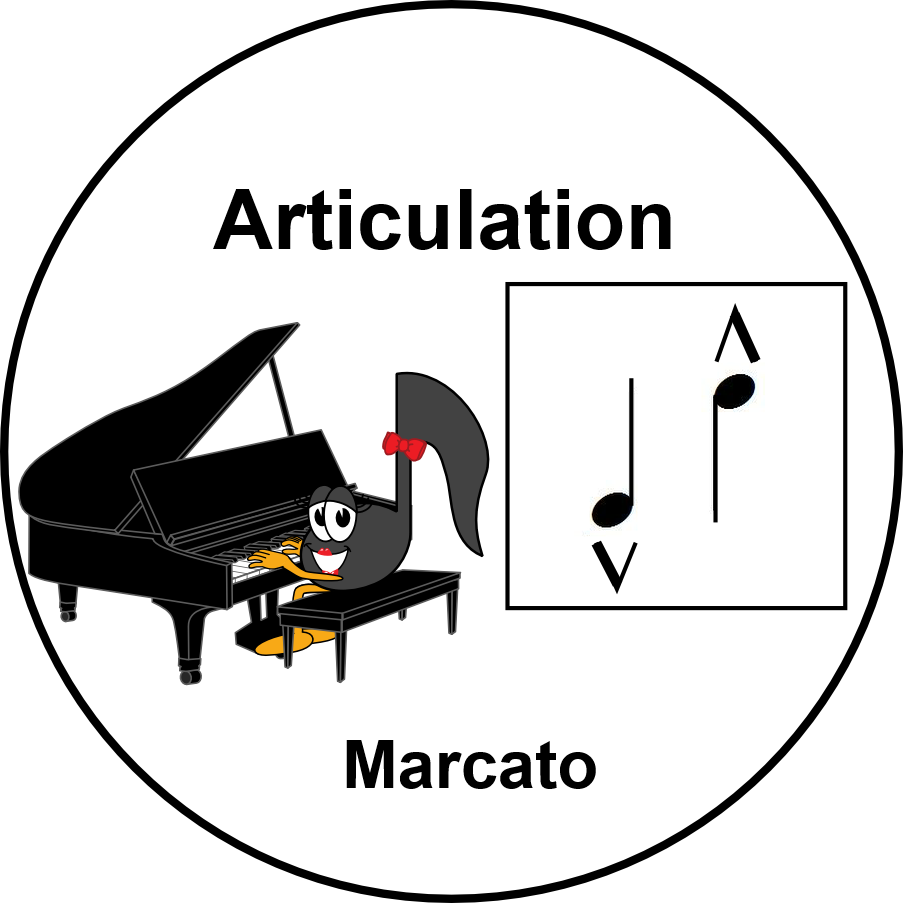
Articulation Signs tell us how to play a note. The Essential Dictionary of Music defines Articulation as "the manner in which notes are performed, such as staccato or legato".
In our Articulation Blog Series, we have explored:
- Articulation Blog Series #1 - Accent
- Articulation Blog Series #2 - Staccato
- Articulation Blog Series #3 - Staccatissimo
In this blog, we will look at the Marcato.
The term "Marcato" means "marked or stressed". So how do you tell that a note is to be played Marcato?
In this Blog, we are going to explore the Marcato Sign - the Articulation Sign that tells us what notes are to be played marked or stressed.
Articulation - Marcato
Dolmetsch.com defines Marcato as Italian for marked, accented, stressed; when applied to a melody, it indicates that it should be given prominence. In German, it is "markiert" and in French, it is "marqué".
When a note/chord or melody is to be played Marcato, the term "Marcato" or the abbreviation "Marc." can be written directly in the score. This is very handy when a larger section or phrase is to be stressed.
However, when written for specific notes/chords, using the Marcato V Wedge (the Marcato Mark) is so much easier.
In the book Evoking sound: Fundamentals of Choral Conducting and Rehearsing, James Mark Jordan indicates that "the marcato sound is characterized by a rhythmic thrust followed by a decay of the sound.".
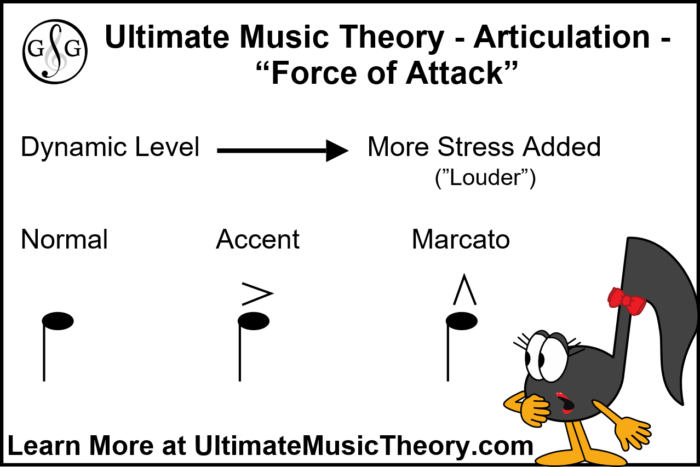
To explain this to my students, I ask them to discuss what they feel would be the difference between an accent ("a stressed note") and a marcato ("marked or stressed").
First of all, what does playing "marked" mean? That is such a weird word and my Dyslexic Brain struggles with another definition of "marked" that is not "I marked your exam"!
Now, "stressed" I get! I like to tell my students that, if I have to ask my hubby to put the milk jug back in the fridge after he uses it, the first time, I ask in my regular voice.
The third time that I have to ask for that milk to be put away, I'm a bit stressed and I ask in a firmer/louder voice (I tell my kids that I am not "yelling", I am asking "firmly"....LOL). This is my "accent" voice.
But if I have to ask a FIFTH time, that is my "marcato" voice - it is firmer, stronger and a wee bit louder, with an exasperated sigh at the end. (If you are a parent, you probably understand that sigh.)
Experiment with your voice. What is your "normal" voice, your "accented" voice and your "marcato" voice. (This can be a lot of fun!) Remember - this is not a screaming or yelling voice - it is not a "fortississimo" voice.
Articulation - Marcato - How to Draw the Marcato V Wedge
The Marcato V Wedge looks like a V. It can also look like an upside down V though. It all depends upon placement.
Now, there is a Fancy way to write the Marcato V Wedge and there is a Simple way to write it.
When writing the V, the point is always facing away from the notehead. The open part of the "V" is centered with the Notehead.
This is important! The "V" is never centered with the stem!
For a Fancy V, one of the lines is thicker and the other is thinner. The thicker line is the "left side line" when the open part of the V is written below the notehead. The thicker line is the "right side line" when the open part of the V is written above the notehead.
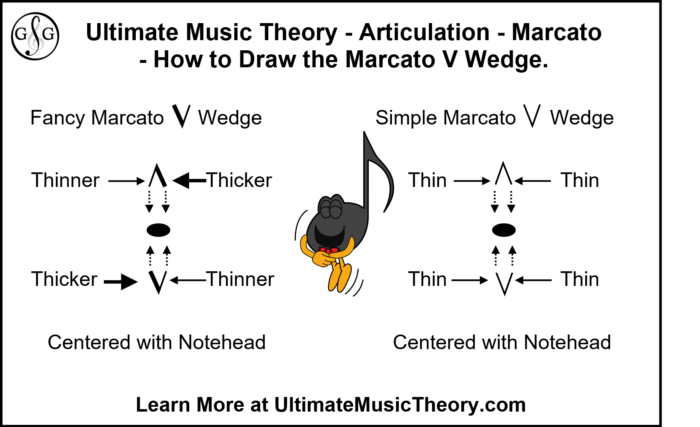
Let's try to make this easier. When you write a normal V, make the first line - the left side line - thicker and the second line - the right side line - thinner. Then, flip the V upside-down. The thicker line is now on the right. It is the same "thicker" line, just upside-down.
Want to make this even more simple for your Students? Just write it like a normal V. We are not computers so we do not need that fancy shaded font.
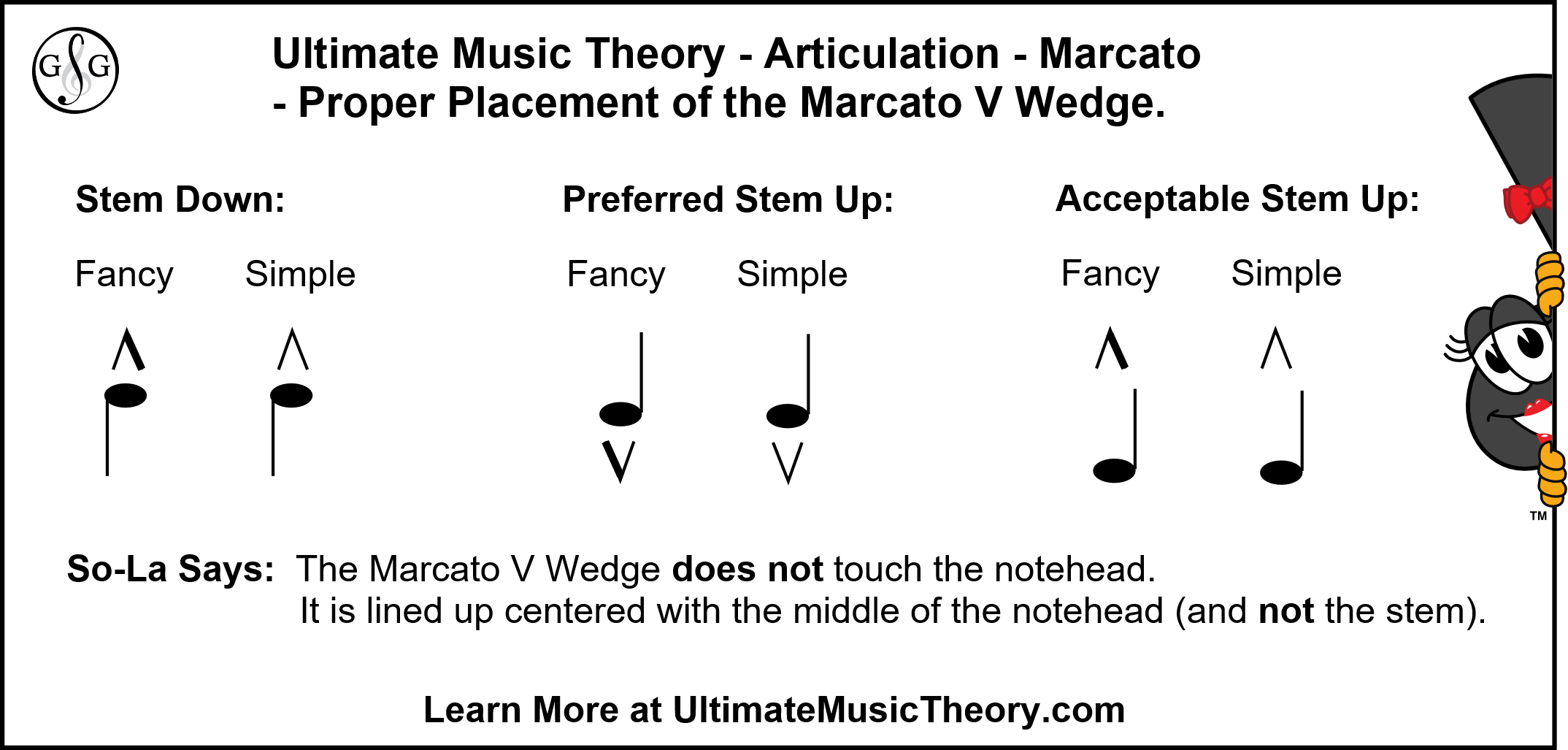
Articulation - Marcato - Placement Rules
Just like the Staccatissimo Wedge, I spent hours trying to find "the definitive rule" for the placement of the Marcato V Wedge. And, once again, there are 2 different thoughts.
The Norton Manual of Music Notation has the vertical wedge (which always points away from the notehead) written above the staff when the stem is down, and below the staff when the stem is up.
The Essential Dictionary of Music Notation has the marcato's preferred placement outside and above the staff (for both stem up and stem down notes). This creates the upside-down V Marcato wedge.
However, this book also states that, for stems up, it is acceptable to write the marcato below the note (where it will look like the V).
In all the Acceptable examples, can you see how the stem is not lined up with the Marcato V? That V is always lined up to the notehead - kind of like a Pacman trying to eat the notehead.
It also must be written so that it doesn't "eat" the stem.
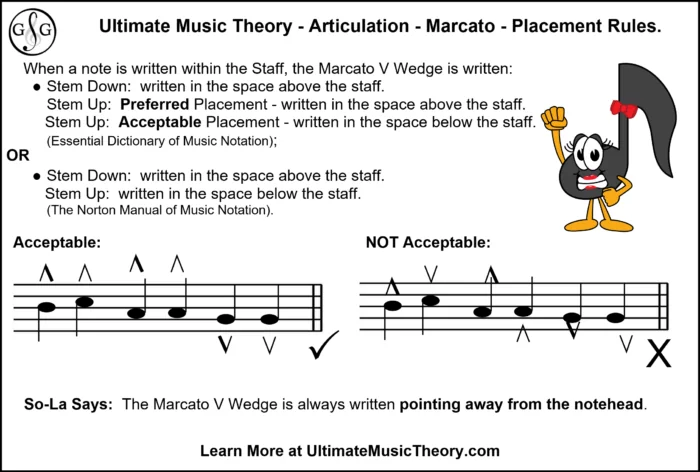
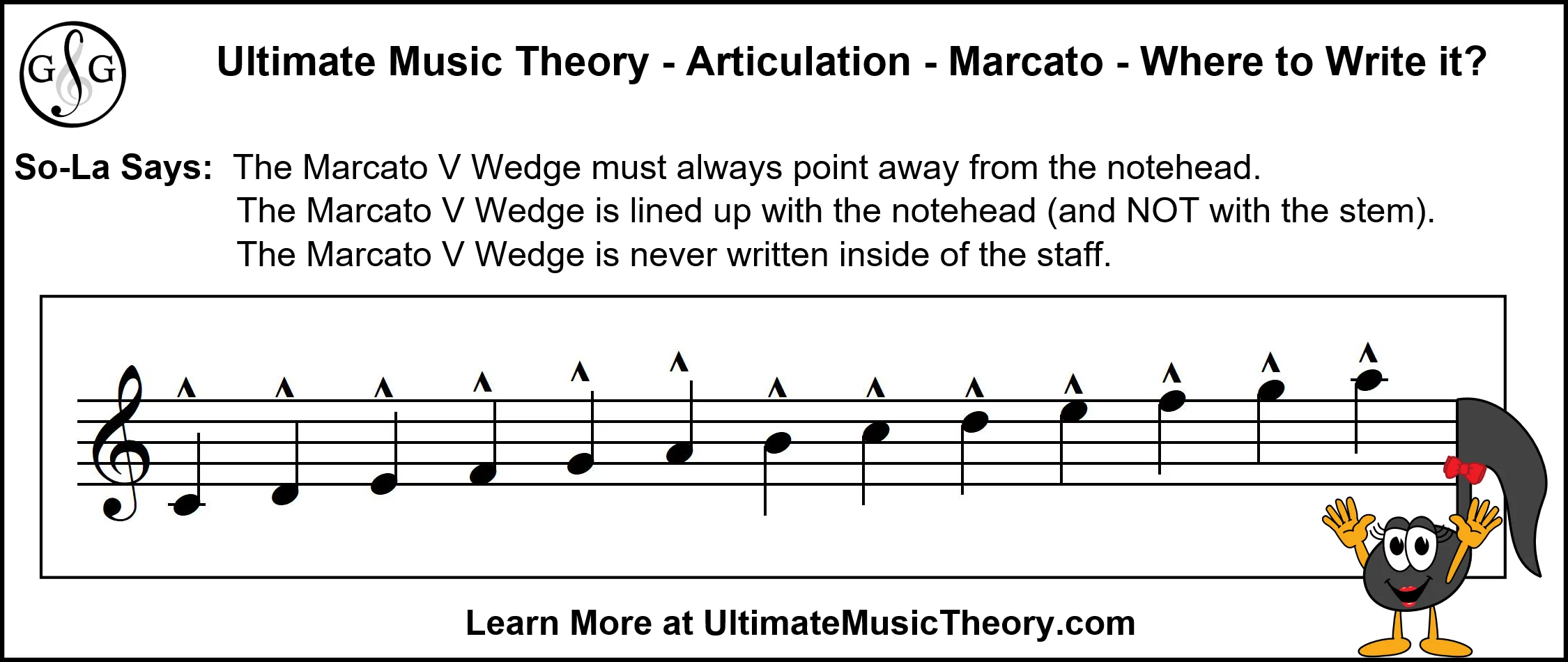
The Marcato SIGN is not in the Ultimate Music Theory Workbook Series, and it is not a requirement on any RCM Theory Exam.
The Marcato TERM is introduced in the Ultimate Music Theory Intermediate Workbook.
Articulation - Marcato - Writing them on your UMT Whiteboard
Right now, I want you to pull out your UMT Whiteboard! Are you ready to learn? I want you to write 3 pairs of Quarter Notes.
- First Pair: Write 2 Quarter Notes on Line #3 with Stems Down.
- Second Pair: Write 2 Quarter Notes on Line #3 with Stems Up.
- Third Pair: Write 2 Quarter Notes on Line #3 with Stems Down.
Add a Marcato V Wedge to each pair of notes, writing the first one in a "Fancy" font, and the second one in a "Simple" font.
- First Pair - Write the Marcato Wedges in the space above the Staff.
- Second Pair - Write the Marcato Wedges in the space above the Staff.
- Third Pair - Write the Marcato Wedges in the space below the Staff.
Which was easier to write?
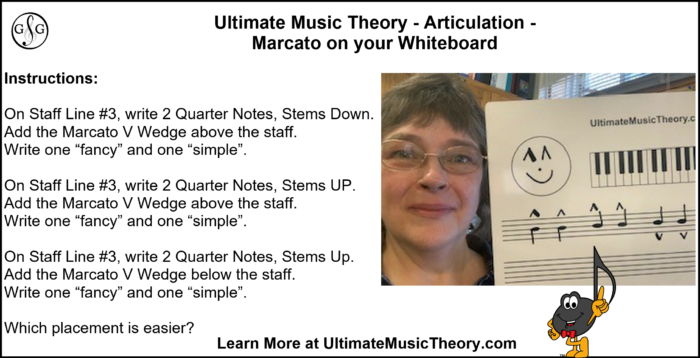
What did you discover?
I discovered that it was so much easier to write the Marcato V Wedge using the Simple Version. Being Dyslexic, I struggle with "exceptions to the rules". I prefer to have just one way of writing something, so the simple upside-down V in the space above the staff works best for me. What about you?
Thank you for reading, and remember to Keep on Learning!
Ultimate Music Teachers Membership
♪ LEARN ♪ PLAN ♪ TEACH ♪ GROW
The One & ONLY Ultimate Music Teachers Membership
To Become A UMT PRO!
Your Success Path Starts Here - Go To TeachUMT.com Today!
Keep on Learning... With a Smile and a Song!
Shelagh McKibbon-U'Ren


